Reviewing The “History” Of Team Yankee – Part Five: Campaign Ideas
September 25, 2017 by oriskany
Here we are, at last, Beasts of War, at the conclusion of our explorations into the “real life” background and context of Team Yankee. Through the course of these articles, myself and Ben Collins (@benc) have tried to offer a small glimpse into how “things were” in the mid-80s, and how a NATO-Warsaw Pact World War III might’ve unfolded.
So far, we looked at the source material for Team Yankee in Part One, compared the strengths and makeup of the armies in Part Two, and looked at how such a war may have unfolded in Part Three, and reviewed other books, movies, and wargames in Part Four.
Now let’s wrap things up with a look at some ideas for battles and campaigns in Team Yankee...some of them maybe a little out of the norm, applying some of what we’ve reviewed about a potential 1980s World War III to the Team Yankee table
Team Yankee Missions
Of course, the Team Yankee rulebook already comes with a portfolio of great missions. By weaving these choices into a larger narrative context, you can assemble a vibrant campaign beyond tracking wins and losses. Just having a campaign map is a big step forward, as it gives these “wins and losses” a geographic relationship to each other.
For example, imagine the initial Soviet smash across the border. The “No Retreat” mission can be used here, giving the NATO player a chance to set up with the “Ambush” special rule. “Dawn” and “Deep Immediate Reserves” reflect the Soviets’ probable time of the attack, and also the fact that both sides have seen this battle coming for a while.
Now the Soviets are pushing deep into West German territory. They’ve probably taken horrific losses, but have committed their second operational echelon (probably by 12:00 hours on Day One) and follow-on battles are igniting across a spreading swath of the NATO corps’ “covering force area.”
“Counterattack” missions can be used to model local NATO strikes against the flanks of advancing Soviet columns. The Soviets might respond with “Hasty Attack,” hoping to exploit a breach where NATO forces have been broken especially badly (perhaps by a massed chemical strike).
“Encounter”, “Dust Up”, and “Free For All” can be used to model where NATO counterattacks are directly meeting Soviet breakthrough attempts. Both sides are having trouble bringing up forces, NATO commanders dealing with massed West German refugees and Soviet commanders trying to push reserve forces across the devastated terrain.
New Invasions
Probably 90% of World War III fiction and wargames have the conflict playing out with US, British, and West German forces fighting against the Group of Soviet Forces in Germany (GFSG). That pits GSFG against two main formations: NORTHAG (Northern Army Group) in north Germany, and CENTAG (Central Army Group) in south Germany.
But no one says the Soviets are limited to just kicking down the front door. An all-out NATO-Warsaw Pact showdown can see the two sides fighting all over Europe. One possibility is being explored by my friend and Team Yankee Boot Camp veteran Dave Wheeler (@davebpg) with a Soviet invasion of Denmark.
Such a campaign involves the NATO forces of LANDJUT – a corps of one Danish and two West German divisions, charged with defending the main body of Denmark and the German state of Schleswig-Holstein. This area may have come under extreme pressure if the Soviets were intent on opening a breakout channel for their Baltic Fleet.
If the Soviets hit this area harder than anticipated by NATO planners, a collapse of initial LANDJUT forces may have prompted NATO reserves (American divisions) to be sent in to stabilise the situation and keep the Soviet Baltic Fleet bottled up. This just may have led to a battle like that depicted in Dave’s epic Team Yankee table.
Other battles may have unfolded even further north. As the Soviet White Sea Fleet (which included most of their nuclear missile submarines) emerged from the Barents Sea past the north cape of Norway, might Soviet amphibious “Naval Infantry” brigades (total strength numbered almost 20,000) made landfall along Norway’s north coast?
Such bases may have been useful in staging land-based aircraft to provide the Soviet fleet with cover, especially against British land-based aircraft based out of Scotland, NATO aircraft based out of Norway, or of course American supercarriers and the dreaded F-14C “Tomcat” of 1980s fame.
Even this isn’t everything. We’ve looked at NATO’s Northern and Central Army Groups, there is also a Southern command which may have been put under dire pressure from Warsaw Pact armies based in Rumania, Bulgaria, the Soviet Caucasus, supported by the Black Sea Fleet.
Turkey and Greece would have been the main NATO states on the defence here, supported of course by American airpower out of Italy. Great Britain has always had a vested interest in protecting Mediterranean shipping lanes and would have been heavily involved particularly in any prospective battles in Greece.
New Theatres
Everything we’ve described so far only covers Europe. Team Yankee battles and campaigns can also be drawn up in a variety of other locations, often with material and terrain most players already have on hand.
One possibility (as briefly discussed in Part 04) is a strike in the Middle East. In fact, this may have been where the war actually starts, only exploding in Western Europe after diplomacy disastrously fails. This Soviets always kept a wary eye on their southern border, and the West, of course, had a critical dependence on Persian Gulf oil.
Just set up desert terrain for your Team Yankee armies, perhaps World War II North Africa terrain updated with some oil refineries. This is also a great place to stage your games if you’re really interested in a “NATO Strikes First” campaign, as we, of course, saw US and British forces on the offensive in the 1991 Gulf War.
Now if you want to get really crazy, one game I’ve always wanted to run was a potential Soviet invasion not of the contiguous United States, but perhaps Alaska? At one point in this region, the US and USSR are only three miles apart, and the Soviets may want to distract the US from a war in Europe by threatening the Alaskan oil pipelines.
This is a remote possibility to be sure, but it’s about as close to a “Red Dawn” case as you’ll plausibly see. It also gets Team Yankee forces onto an icy, snow-bound table if nothing else. Also, these northern polar regions are where most of the US and Soviet naval and nuclear operations were expected to be, so why not a land operation as well?
New Units?
I was honestly very excited when I saw Battlefront’s “Red Thunder” release for the Soviets. The inclusion of the T-64, one of the most underrated tanks of the Cold War, and the fact that it’s actually better than the T-72 on the tabletop is a sure sign that Battlefront knows what it’s doing in presenting a “factual” 1980s Soviet Army.
Of course, there are further possibilities. The biggest among these is the Soviet T-80 main battle tank. Through the 1980s, this tank gradually replaced the T-64 in GSFG divisions (where the T-72 was not fielded) and also in other Soviet commands were the T-72 may have seen a limited role (e.g., NSGF in Poland, CSGF in Czechoslovakia).
Until Battlefront comes out with a T-80, however, I’ve been using T-72s with K5 reactive armour as proxies. The problem is the card and game values. This shouldn’t be too hard, however. The T-80 was incredibly fast, had better armour, and a similar gun (although that gun could fire a more advanced anti-tank missile than the T-64’s).
Another possibility is the American AH-64 Apache attack helicopter. Now I know this model didn’t come along until later in the 1980s, but I happened to find a 1/100 model of one “on the cheap” and built it as an auxiliary Team Yankee tabletop miniature. As fearsome as the Cobra is, the Apache would be downright ferocious.
Instead of going forward in time, how about we also go back? We have the T-55 from Battlefront, all we need is some T-62s, American M48A5s and M60A1s … combined with Centurions already released for “Fate of a Nation,” and we can run 1973 Yom Kippur War scenarios as a Team Yankee “prequel.” Any takers?
Many Thanks!
We hope you’ve enjoyed this look into the “history” of Team Yankee. As we’ve seen, the “fluff” for this game is actually pretty grim, especially since it very well could’ve happened. In some ways Team Yankee has the best of both historical and non-historical gaming, presenting gritty historical detail with the relief that all of this DIDN’T happen.
I’d like to thank Ben Collins for his expertise, photos, and writing through the course of this project. This guy knows his stuff, and putting this series together would have been a lot tougher without his prompt help…and flexibility with our publication schedules! I’d also like to heartily thank Dave Wheeler for his epic Team Yankee photos as well.
I’d also like to thank Warren and the team for yet again providing the opportunity to publish on Beasts of War, Ben Shaw, Az, and Tom Gurthie for their work editing and web publishing, and Lance for the great front-end presentation graphics.
Most of all, thanks to the readers who’ve taken the time to read these articles. Please post below what you thought, or if you have any questions or comments. Most of all, what are YOUR ideas about how a Third World War might have broken loose in the 1980s, how it may have developed, or how it may have turned out?
If you liked this article and want to know more about the history behind Team Yankee, make sure to check out the Weekender Interview with oriskany below…
Click On The Image and you’ll be taken directly to the segment in the show to learn more.
If you would like to write an article for Beasts of War then please contact us at [email protected] for more information!
"I was honestly very excited when I saw Battlefront’s “Red Thunder” release for the Soviets..."
Supported by (Turn Off)
Supported by (Turn Off)
"...no one says the Soviets are limited to just kicking down the front door. An all-out NATO-Warsaw Pact showdown can see the two sides fighting all over Europe"
Supported by (Turn Off)
































![Very Cool! Make Your Own Star Wars: Legion Imperial Agent & Officer | Review [7 Days Early Access]](https://images.beastsofwar.com/2025/12/Star-Wars-Imperial-Agent-_-Officer-coverimage-V3-225-127.jpg)


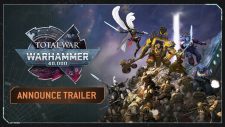





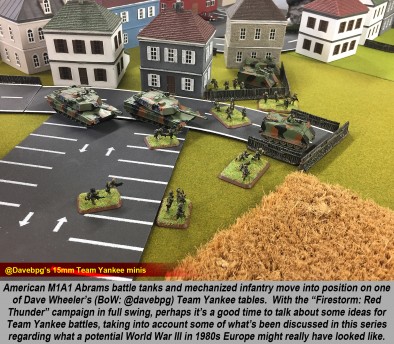
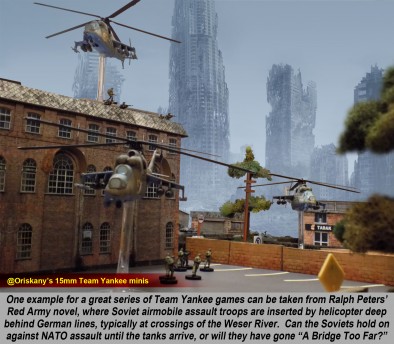
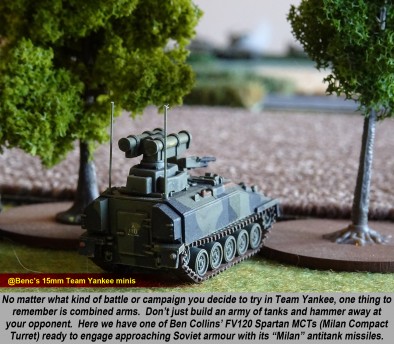
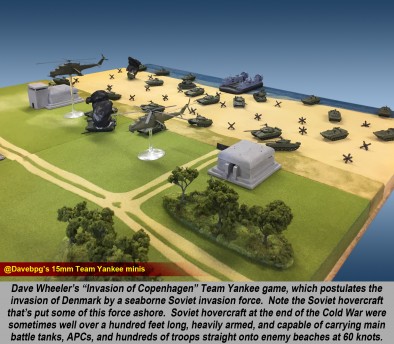
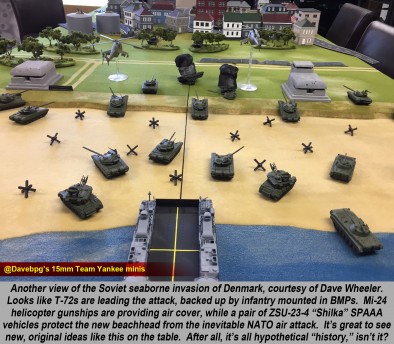
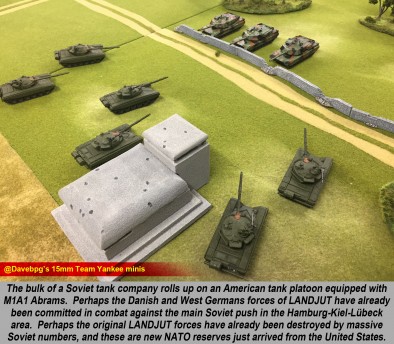
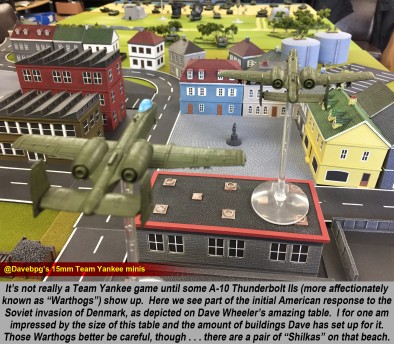
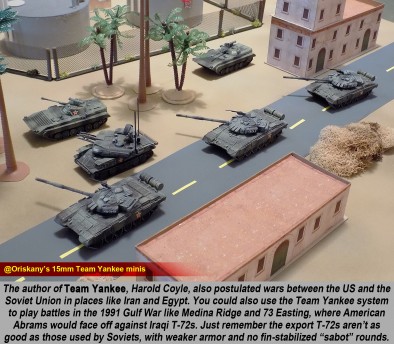
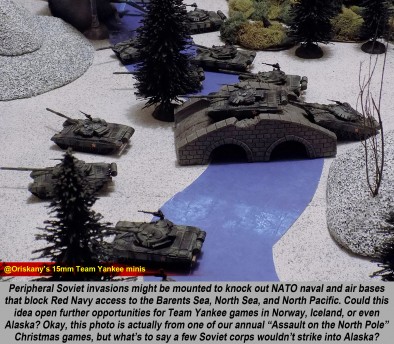

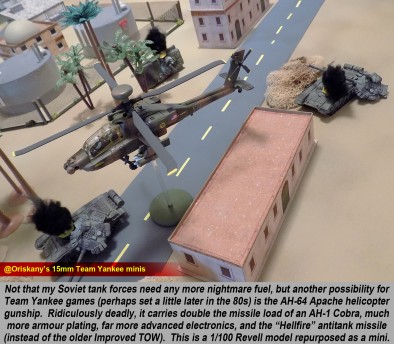
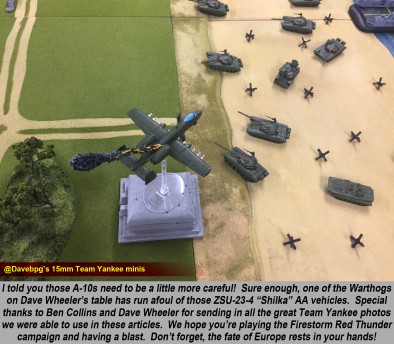
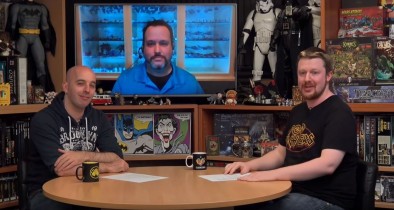
































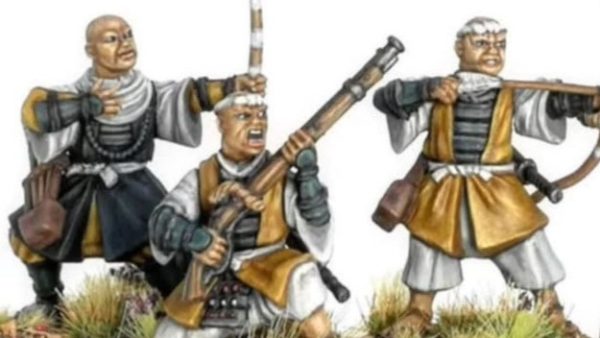
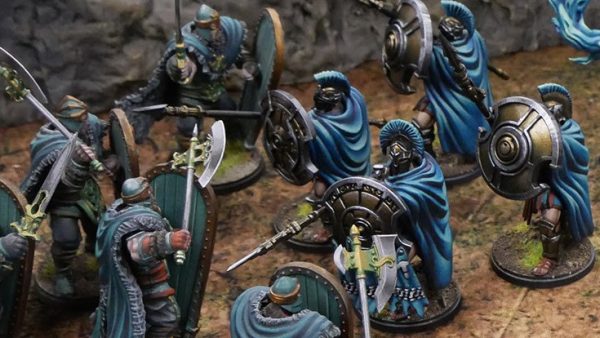
Well done to everyone involved in this article series. It has been an excellent read and I have enjoyed reading everyone’s comments.
I like the picture of the helicopter landing in the ruined city, and @davebpg ‘s pics with the Warthogs!
Thanks, @gladesrunner! 😀
Great article series again, I enjoyed it a lot.
Thanks, @caledor2 – and thanks for all the help and additional graphics support provided by @lancorz and @brennon ! 😀
Hopefully this was interesting and inspired some players to get involved with the Firestorm: Red Thunder Team Yankee Campaign. I can’t wait for the final results to see who wound up winning the campaign!
Good job @oriskany and of course the BoW team.
I have to admit that due to other more grown up events, like work, holiday and moving house, I’ve not had the chance to join in the online version of the Firestorm Red Thunder campaign. My FLGS (well, not so local now that I’ve moved!) has the in-store pack so I’ll be heading back there for some campaign weekends.
Before the F:RT announcement I was sketching out a campaign flow chart using the various mission types BF had pushed out. Usual stuff really, play an engagement, blue wins play mission type A, red wins play mission type B.
I’d like to see BF give more detail in future TY campaigns. For instance, make NORTHAG, CENTAG & SOUTHAG (and those who have paid attention to this series will know what they stand for!) their own campaign map areas. Those areas are then broken down into smaller areas, much as the RT map currently is, focusing more on terrain, rivers and population centres (not just the odd major city).
That system could be applied to anywhere in the world that players want to fight over. Hmmm, now I’ve said that I’m off to make some notes….
Awesome, @benc – “NORTHAG, CENTAG & SOUTHAG (and those who have paid attention to this series will know what they stand for!)”
That does it … time for a quiz!
Question One:
What does GSFG stand for?
(a) Gigantic Science Fiction Geeks
(b) Grumpy, Sour, Frowning Grognards
(c) Group of Soviet Forces in Germany
(d) Go Sit on a Frigging Gremlin
**hint – when in doubt – always pick “C” on multiple choice tests! 😀
Also,
Whilst I would love to see the AH-64 Apache make an appearance in TY it would have to be the A model, not the much improved D model.
The A model would be a natural progression in the technology tree from the Cobra. The A model uses electro-optical (EO) sighting systems to identify and engage targets, it does not have the Longbow fire control system and radar of the D model.
In game terms it could retain the hunter killer rule but I’d give the Hellfire missile more AT punch than the TOW and greater range.
I would agree that the A should come before the D. The D was just the 1/100 Revell model that was 6.00 USD with a 40% discount at the AC Moore Craft store. 😀
Of course, the rules on the card would have to reflect the “A” variant (primarily, without the rotor-mounted mast for enhanced pop-up capabilities and not quite the same sensors / target acquisition capabilities).
damn it … my one piece of knowledgde about helicopters and I’m not first to post 😉
(blame me playing Gunship 2000! and Jane’s Longbow for that … )
I’m a lot weaker on choppers than I am on tanks, @limburger (and @stvitusdancern ) – so please post away! 😀
all you missed was the fact that longbow variant had hellfires that were radar guided as opposed to the classic variant, which made them fire&forget.
Definitely made life easier in the simulators, because AA like those zsu-whatsits (which I for some reason remember as ‘suzie quatros’) less of a threat.
.
That’s all I had.
Had to use the wiki to get to details.
Actually, Suzie Quatros makes sense. “Suzie” sounds a little like ZSU (some people here call them “Zoo-23s” and there are four guns = Quatro. 😀
Another great article @oriskany
The Firestorm Online campaign just finished, sadly I only got in a few games but they lead to a pretty consistent narrative. 63rd Guards TR from 10th Guards TD, 3rd Shock Army took part in the attacks on Hanover, swung north to assist in the drive to Amsterdam, then pivoted south to press into Ruhr in the Soviet attempt to encircle the British still holding Hanover. It was a lot of fun.
In the online campaign the invasion of Denmark was conducted largely by a spearhead pivoting north, presumably 2nd Guards Tank Army, and a surprise mass air assault.
Damn, @wayton – sounds you your Soviets made a lot of progress! Then again as a Guards Tank Regiment, you’d better! Talk about a spearhead element, and in 3rd Shock Army, no less!
3rd Shock Army is also @brucelea ‘s — Lt. General Brusilov’s – command formation from the Team Yankee boot camp! You’d better do well or he’ll know the reason why! 😀 😀
Actually, I don’t know if @davebpg ‘s Denmark battle was part of the campaign or not. I’ll wait until he shows up and makes a comment.
Thanks for the comment, glad you liked the article! 😀
Well done guys, good read throughout
I missed the Firestorm campaign, hopefully get stuff (and people ready for Round 2!)
Do like the idea of Apaches instead of Cobras it has to be said…
Right, best crack on with painting this stuff! 🙂
Thanks, @olliep – I too will have to clear out my plastic mountain a little bit, before buying some of these T-64s and new BTRs and reinforcing my Soviet 1st Guards Tank Army battalion. 😀
Yeah… I may have a few boxes of those sat in the pile….
Now, @olliep , I just need an “Airwolf” for my helicopter force! 😀 😀 😀
https://www.youtube.com/watch?v=lTb_5oPqCys
No Blue Thunder ?
https://youtu.be/Lx_a-h9lspo
To each his own @limburger , but for my money Airwolf is > Blue Thunder. 😀
Great read… as allways.
Thank a lot for all the effort put into this series.
I’m glad that I had the opportunity to meet all of you three at the Team Yankee Bootcamp. There were some great talks with @benc and an amazing game against @davebpg . And last but not least: a 100% handmade T-72 build by @oriskany … leading my NVA-Forces 🙂
Well done guys!
Indeed, @setesch – the Team Yankee boot camp was indeed a blast, even with just the forces we had on hand. I could only imagine what such an event would be like now, with all these German, British, and expanded Soviet units available, plus with everyone having time to build, paint, and bring much larger forces. Talk about a 24-foot table mega game! 😀 😀
@oriskany @sestesch
I say we pressure the BoW team to push all their bootcamp gaming tables together. That should give us enough room to have the Mother Of All Team Yankee Battles.
Team Yankee Boot Camp . . . 2.0 !
Team Yankee Boot Camp . . . 2.0 !
Team Yankee Boot Camp . . . 2.0 !
Yeah! Shout it out loud!!! 🙂
Maybe we should get a petition going. 😀
Why not Battegroups’ version instead ? 😉
Or didn’t @piers imply that he was working on their take on this time period ?
I would go to a Battlegroup boot camp. I mean, shit … it’s not like I’ve been that game’s biggest champion on BoW since 2015 or anything.
@oriskany talking of Northag, and not meaning to take the Thunder out of this series are you thinking you will switch to Battlegroup Cold War using some of the above ideas for campaign building.
@admiralandy – I’ve seen photos and articles about the new Battlegroup Cold War … but I don’t own it yet. 😀
And take the “Thunder” out … I see whatcha did there. 😀 😀 😀
Many thanks @oriskany & @benc for a comprehensive and thought provoking series, even if it brought back organ-shuddering memories of freezing nights in fire trenches in some bloody German forest.
You’ll be pleased to hear that I experienced the wrath of the “long haired General” when she who must be obeyed caught me pricing up a TY starter set!
Ah yes, the “long haired generals.” Sometimes I think the “G” in “Gestapo” must have stood for “Girlfriend.” 😀
“What are you doing on that computer? Spending more money on your little toy tanks? AUGH! Why can’t you stare at porn like a normal boyfriend?!?“
With the update from Battlefront that there will be new books coming for ‘Nam and Fate of a Nation with help from Osprey Publishing it looks like we will soon have a bunch of new rules and the ability to backwards in time to expand the Cold War to a whole new level. I for one am pretty excited about this idea. My Soviet forces aren’t going to be painted to fit any of these scenarios but that won’t stop me from taking a real hard look at how to make up some fun on the tabletop.
Great series guys, it is a lot of fun to look to the past and what if (I guess that is what we really do) the way the world could have been.
@ghent99 – Definitely looking forward to the updates to Fate of a Nation and Vietnam (specifically, I want M48A5s and T-62s for Yom Kippur War and M48A2s for Vietnam). I know BF has done AIW and Vietnam expansions before, but I’m looking forward to see how they treat the subject with the newer Team Yankee / 4th Edition FoW rules model. 😀
I really liked the Nam week done here on Beasts a long while ago. It is what actually got me back into war gaming. With the upcoming upgrades to the system I am really excited.
The AIW is of real interest and hope we see more plastic units produced.
And @bonesbs as long as you survived you get to keep playing. That is the rule. 🙂
I agree about Nam week, I watched it after the FoW FtW Season One that actually got me to sign up to Beasts of War.
We need to get Dave Shoulder @lafayette back on the site somehow. 😀
@ghent99, Glad you enjoyed the series.
Having run several demo games at my FLGS I always tell people that TY isn’t a tabletop weapons effect simulator, nor is it a staff officer training tool. TY is a game, with game mechanics and rules with the outcome of which is decided by rolling dice. The tiny plastic versions of kit and equipment on the table will not operate in the same way that it did in real life.
However, the TY rules happily can be used in a wider, more complex narrative as @oriskany describes in this article. That narrative does not have to be a repeat of history, it can cover the ‘what if’ scenarios as well as stepping into alternative realities such as Lloydoslavia.
I see a lot of folks getting too hung up on specifics sometimes (“Tank XYZ had super gas powered suspension with a sprocket release spring system so it should move 12.5 inches and not 12”) and I’ve been guilty of doing that to a degree (I described in depth to @gri3elda how the antenna on the underside of the TY Lynx model was all wrong. Her facial expression was all I needed to stop talking). Not that accuracy isn’t important but as a game there are compromises to be made. Hopefully this series has enthused people about TY and how the game and rules can be expanded upon to generate some great experiences and fun gaming.
Indeed, this last article was largely to kick around ideas that aren’t in the usual “Team Yankee NATO vs. WP Central Germany” mold. That, and to use some more of the great photos we had. 😀
As you say, totally a game. Whatever it takes for people to get together, toss some tanks on the board, and have some fun. 😀
I truly did. Next onto Saratoga and the 40 years or war that followed, and then came the Congress of Vienna and the Treaty of Ghent, bringing on 100 years of European peace.
Keep up the good work.
Awesome, @ghent – I hope you like the Saratoga series as well. That series needs to get the same kid of comment count this Team Yankee series has been getting. 😀 (Actually was a lot more work since there are more original miniature photos in that one).
a great finally everyone the middle east has been the main hot spot for tension for many years until this year that is.
Thanks, @zorg – I just think it would be great to see someone set up a Team Yankee table in a big 15mm Iranian oil rig somewhere, with US and Soviet tanks going at it ala Harold Coyle’s Sword Point.
Or for a more serious angle, the new LAVs and M60s coming out for the “Stripes” set to do a USMC 1991 Desert Storm force against Iraqi T-72s, T-55s, and BMPs.
a desert table is a must for modern battles you could always fight a terrorist/IS type scenario with so much going at the moment.
For terrorist / ISIS / insurgent engagements I’ve always used Force on Force in 20mm. We did this for our Ukraine 2014-2015 war series a while back, and also highlighted some tables for 2003-2011 Iraq and Afghanistan in our Force-on-Force article series back in 2016.
I’ve always wanted to do a US Marine Corps 1991 and 2003 Iraq series. Gotta be careful how we handle material that recent, of course.
yup.
😀
Desert storm III?
The new “Stripes” includes LAVs and possible late model M60s? If so that would be awesome, allowing a USMC-themed force for Desert Storm – February 1991. 😀 Put them up against some Iraqi T-72s for historical Desert Storm battles.
Great stuff again lads
Thanks very much, @rasmus . 😀
Thanks for all the kind words about the pics and the table guys. It was actually something I created as a “prototype” for our upcoming table at Salute. We are playing around with a few home brewed rules to represent the beach landings etc.
If your at Salute 2018 please stop by and say hi.
Man, that table was awesome enough before I knew you were planning on taking it on the road to Salute!
This popped up in my FB feed just now. An interesting spin on the cold war going hot…
http://www.wargameshc.co.uk/an-end-to-the-cold-war-at-the-wargames-holiday-centre/
Great link, @davepbg – I noticed in one of the earlier paragraphs:
At the Reigate club we have been keen WW2 players for many years and were looking for something a bit different and we designed a few scenarios that assumed war had broken out between the Soviets and Western Allies in 1946.
. . .
Now why does that scenario sound familiar?
. . .
http://www.beastsofwar.com/modern-warfare/world-war-2/world-war-25-gaming-alternate-history-finale/
http://www.beastsofwar.com/liveblogentry/oriskany-takes-boot-campers-through-world-war-2-5/
. . .
They have some great photos on that page, though. 😀
I keep telling myself I don’t need to do armour heavy gaming in 15mm, I’ve done moderns in 10mm- Europe and Middle East, I’ve done Arab-Israeli in 20mm ’67 and ’73. I DON’T NEED 15mm moderns, I really don’t.
I’m lying to myself, aren’t I??
I’m going to the Derby Worlds con the weekend after next, money will disappear out of my wallet and a load of TY minis will appear in my car. Then I will have to explain to SWMBO why I need more toy tanks. Thanks internet, you made me do it.
Seriously though, great series chaps. It’s fired me up for modern tanks that I’ve been trying to avoid since TY first came out. Just have to convince a couple of lads at club to join in, I know at least two of them are wobbling. Just need to wave some new shineys under their noses and they should crack.
Personally I would be heading straight to the H&R stand
Yeah, I still have my old West German H&R stuff that I played Challenger 2000 with when I first got into moderns as well as some GHQ stuff- lovely models but stupid prices. Also a ton of Skytrex 1/200 stuff. I know with 15 mm the abstraction for ranges and movement are extreme but I just like the look of the bigger models. Still not sure about the TY rules though, I’ve got the rule-book and am going to sit down and reread it again and keep an eye out for other modern rule sets.
I can recommend Fistful if Tows 3. Great little game
Oh and your the second person to mention Challenger 2000 on this site. I had just about recovered after the first mention 😉
I keep trying to resist the urge to find an old copy of GDW Assault somewhere on the internet. I still have a few of the fold-up maps just for nostalgia, but nothing like a complete game.
Awesome. 2-3 guys should be enough to get a good Team Yankee campaign going. 😀
@torros Heh, yeah, I used to help out at the Worlds in the late eighties/early nineties for my mate who organised the “Game-We-Can’t-Mention” tournament. I remember some of the rage that used to go on at some of those tables, put me off competition gaming for life!!
Actually it did play quite well at a smaller scale . The world’s just tried to make the games too big
Jim always was ambitious with the tables, he did produce a few ‘challenges’.
When organizers get a rare chance to run a big game, and people have to spend a lot of money, travel, time off, etc. to come to the event, sometimes the organizers are a little too ambitious and create games that are too big. It’s a noble mistake to make, but I’ve seen it happen a few times (and honestly, made it myself more than once back in the day).
@oriskany The games Damon was referring to were tournament games at the World Championships at Derby
Right, that’s what I’m saying. I’ve seen game organizers like this “overdo” it with games that are too big, or exceed the abilities of their staff or referees.
I am also interested iif PSC will follow through with their ideas for 10mm moderns. That I would be interested in
Yes, some nice new plastics would be great. The Skytrex stuff I have is very dated now, some of the moulding faults that were ‘acceptable’ 25 years ago look awful compared to new resin and plastic stuff
The Pendraken 10mm modern range there slowly getting together including a massive push on a Korean War range their doing are also nice
Tangent- talking about music relating to the cold war earlier, tonight wifey has been watching ‘classic’ (ie. Reeeallly old) episodes of Top of the Pops from the eighties. Up popped OMDs song ‘Enola Gay’, singing about a B29 dropping atom bombs, which for some reason reminded me of Ultravox singing about the end of the world in ‘Dancing With Tears in my Eyes’. Real downer. Scorpions time.
That type of music was one of the bad part of the 80’s
Yar, been enduring a load of new romantic crap all night, was brightened up by Ace of Spades though, oh, and some Ra-Ra skirts and Claire Grogan flashing her knickers. What?.. no darling, wasn’t staring at anything…
@oriskany I think we maybe had crossed wires. A big game to me is lots of players playing one game not a tournament. The result is the same in either case
Was just re-reading this and had to say DAMN that first up shot pic of the Hinds is AMAZING!
Team Yankee Hinds … a lot of Photoshop for the background. 😀
Just finished reading ‘Chieftains’. Some really grim action, but felt a couple of the stories were left hanging and the end is a real gut punch. Overall I enjoyed it. Really fancy gaming a British battle group now.
‘Red Army’s should be arriving any day now, so more good reading to look forward to.